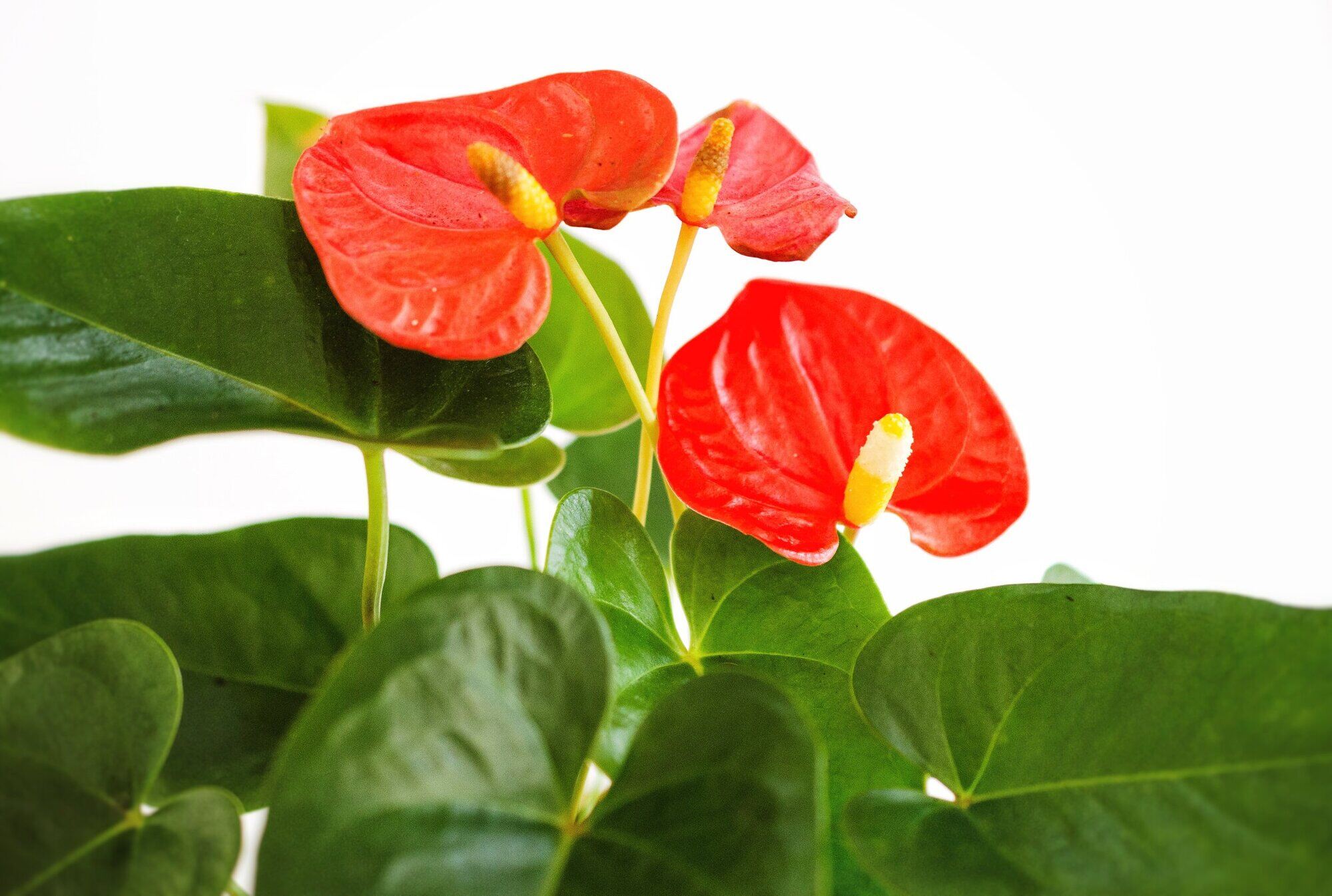
The Flamingo Flower, scientifically known as Anthurium andreanum, is an extraordinary plant that captivates with its stunning beauty and intriguing characteristics. This tropical plant is native to the rainforests of Central and South America, where it thrives in warm and humid conditions. With its vibrant red, pink, or white bracts and glossy foliage, the Flamingo Flower stands out as a popular choice for both indoor and outdoor gardens.
But there’s more to the Flamingo Flower than meets the eye. In this article, we will explore 15 extraordinary facts about this captivating plant, uncovering its unique adaptations, cultural significance, and fascinating reproductive strategies. Whether you’re a plant enthusiast, a gardening aficionado, or simply curious about the natural world, join us as we delve into the intriguing world of the Flamingo Flower.
Key Takeaways:
- Flamingo flowers, native to South America, have heart-shaped blooms and come in various colors. They symbolize hospitality and are popular for indoor gardens, but are toxic to pets.
- These extraordinary plants thrive in humid, indirect sunlight environments, have medicinal properties, and attract positive energy according to feng shui beliefs. They are pollinated by beetles and commercially cultivated worldwide.
Flamingo flowers are native to South America.
These beautiful plants, scientifically known as Anthurium andraeanum, can be found growing naturally in regions like Colombia, Ecuador, and Venezuela. They thrive in tropical and subtropical climates, where they can be seen adding a splash of vibrant color to the lush green landscapes.
Flamingo flowers are known for their distinctive heart-shaped blooms.
The flowers of the flamingo flower plant are unique in their shape, resembling a heart with a prominent spadix, which is the spike-like structure that emerges from the center. This distinctive feature adds to their charm and makes them a popular choice for floral arrangements and displays.
The bright red color of flamingo flowers is not actually the flower itself.
Contrary to popular belief, the vibrant red hue of the flamingo flowers is not the actual petals. The red color is produced by modified leaves called spathes, which surround the true flowers. These spathes work as protective structures, attracting pollinators and providing shelter for the tiny flowers within.
Flamingo flowers have a long blooming period.
One remarkable aspect of the flamingo flower is its extended blooming period. The flowers can last for several weeks, sometimes even months, making them a delightful addition to any indoor or outdoor garden. With proper care and maintenance, you can enjoy the beauty of these flowers throughout the year.
Flamingo flowers are not only found in red.
While the classic red variety is the most well-known, there are actually various color variations of the flamingo flower. You can find them in shades of pink, white, orange, and even green. Each color variation adds its own unique flair and can be chosen to match different aesthetic preferences.
Flamingo flowers have a symbolic meaning.
These striking flowers are associated with different symbolic meanings. They are often considered a symbol of hospitality, making them a popular choice for housewarming gifts. Additionally, they are known to represent abundance, prosperity, and long-lasting love, making them a suitable present for anniversaries and special occasions.
Flamingo flowers are epiphytic plants.
Epiphytic plants are those that grow on other plants, such as trees, without causing harm to the host. Flamingo flowers possess aerial roots that enable them to attach to surfaces and extract essential nutrients from the air and organic matter. This unique adaptation allows them to thrive in their natural habitats.
Flamingo flowers require indirect sunlight.
To ensure the healthy growth of your flamingo flower, it’s important to provide them with bright, indirect sunlight. Placing them near a window or in a well-lit room, away from direct sunlight, will help them flourish. Avoid exposing them to harsh, direct sunlight as it can damage their delicate foliage.
Flamingo flowers prefer humid environments.
These tropical plants thrive in environments with high humidity levels. To recreate their ideal conditions, misting the leaves regularly can help maintain the humidity around the plant. Another effective method is placing a tray filled with water near the plant, allowing the evaporation to increase the moisture in the air.
Flamingo flowers are toxic to pets.
While they may be a stunning addition to your indoor garden, it’s essential to keep flamingo flowers out of reach of pets, especially cats and dogs. The plant contains calcium oxalate crystals, which can cause irritation and discomfort if ingested. If you suspect your pet has consumed any part of the plant, seek veterinary assistance immediately.
Flamingo flowers have medicinal properties.
In addition to their aesthetic appeal, flamingo flowers have been used in traditional medicine for their healing properties. They are believed to have antimicrobial and anti-inflammatory effects, making them potentially beneficial for treating wounds, burns, and skin infections. However, it’s crucial to consult a healthcare professional before using them for medicinal purposes.
Flamingo flowers are a popular choice for indoor gardens.
With their beautiful blooms, lush foliage, and relatively low maintenance requirements, flamingo flowers have become a favorite among indoor garden enthusiasts. They add a touch of elegance and vibrancy to any living space, making them an excellent choice for those looking to brighten up their homes.
Flamingo flowers are pollinated by beetles.
Nature has its unique ways of ensuring pollination, and in the case of flamingo flowers, beetles play a crucial role. These plants have evolved to attract specific beetle species with their bright colors and distinct scent. The beetles help in transferring pollen from one flower to another, ensuring successful reproduction.
Flamingo flowers are commercially cultivated all over the world.
Due to their popularity and visual appeal, flamingo flowers are extensively cultivated in many countries. They are grown not only as ornamental plants but also for the floral industry. The cut flowers are used in bouquets, flower arrangements, and various decorative purposes, both domestically and internationally.
Flamingo flowers are associated with positive energy.
According to feng shui beliefs, flamingo flowers are believed to attract positive energy into the home. Placing these plants in specific areas is said to promote good luck, harmony, and emotional well-being. Incorporating flamingo flowers into your living space can help create a positive and uplifting atmosphere.
In conclusion, the “15 Extraordinary Facts About Flamingo Flower” highlight the fascinating aspects of these remarkable plants. Whether you are captivated by their vibrant colors, intrigued by their unique shapes, or enchanted by their symbolic meanings, flamingo flowers undoubtedly stand out as a remarkable addition to any garden or indoor space. With proper care, these extraordinary plants will continue to captivate and bring joy to plant enthusiasts around the world.
Conclusion
Flamingo flower, also known as Anthurium, is a fascinating plant that captivates with its vibrant flowers and unique foliage. From its origin in the tropical rainforests of Central and South America to its popularity as a houseplant, the Flamingo flower has many extraordinary facts to uncover.
Whether you are a plant enthusiast or just appreciate the beauty of nature, the Flamingo flower is a must-have addition to your collection. Its long-lasting blooms, air-purifying qualities, and low maintenance requirements make it an ideal choice for both experienced and novice gardeners.
So, next time you come across a Flamingo flower, take a moment to admire its stunning colors and delicate petals. It’s a living work of art that brings a touch of tropical elegance wherever it goes.
FAQs
1. How often should I water my Flamingo flower?
Flamingo flowers prefer moist soil but do not like to sit in standing water. It is recommended to water them thoroughly once a week and allow the soil to dry slightly between waterings.
2. Can I place my Flamingo flower in direct sunlight?
No, Flamingo flowers prefer bright, indirect light. Direct sunlight can scorch their leaves and cause damage. Place them in a well-lit area, away from direct sunlight, preferably near a north or east-facing window.
3. How can I promote blooming in my Flamingo flower?
To encourage blooming, provide your Flamingo flower with a consistent temperature between 65-80°F (18-27°C), high humidity, and regular fertilization with a balanced houseplant fertilizer. Also, make sure it has a well-draining potting mix to prevent waterlogged roots.
4. My Flamingo flower is not blooming. What could be the reason?
Several factors could contribute to a lack of blooming in your Flamingo flower, such as inadequate light, improper watering, low humidity, or a lack of nutrients. Assess these conditions and make the necessary adjustments to promote blooming.
5. Can I propagate my Flamingo flower?
Yes, Flamingo flowers can be propagated through division or stem cuttings. Division involves separating the plant into smaller sections, each with its own root system. Stem cuttings can be taken from healthy parent plants and rooted in a well-draining potting mix.
Flamingo flowers' vibrant colors, unique shape, and air-purifying qualities make them extraordinary houseplants. Their long-lasting blooms and positive symbolism add charm to any indoor garden. Flamingo flowers, also known as Anthurium, have many more surprising characteristics waiting to be discovered. For plant enthusiasts craving more fascinating insights about this genus, exploring additional facts about Anthurium scherzerianum will satisfy that curiosity.
Was this page helpful?
Our commitment to delivering trustworthy and engaging content is at the heart of what we do. Each fact on our site is contributed by real users like you, bringing a wealth of diverse insights and information. To ensure the highest standards of accuracy and reliability, our dedicated editors meticulously review each submission. This process guarantees that the facts we share are not only fascinating but also credible. Trust in our commitment to quality and authenticity as you explore and learn with us.


